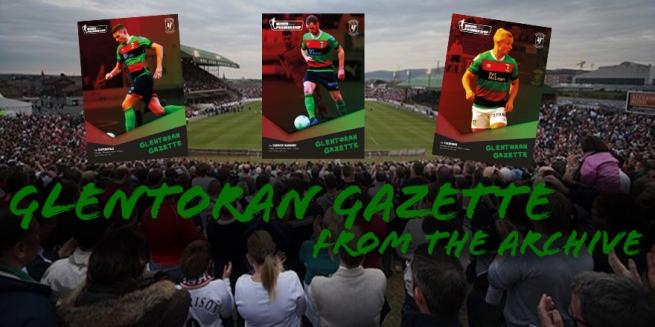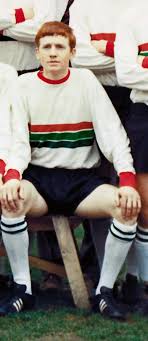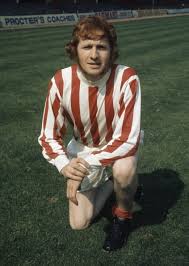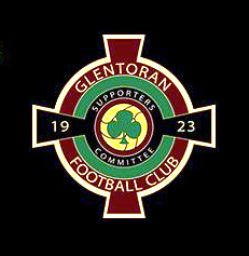
With everyone away from the Oval for an undetermined period, we have decided to bring Glentoran supporters some of the most compelling content from the multi award winning Glentoran Gazette. We hope you will enjoy the stories and player interviews we bring and that it will encourage you to buy a Gazette at our home matches when football returns. Many thanks to the Glentoran Supporters Committee (1923) for use of this material. The "From the Archives" series will consist of a number of very compelling articles on Glentoran's history. They are written by lifelong Glenman and long time Gazette contributor Brian McClelland.
Conroy’s Cup by Brian McClelland
“A special flavour haunts the east end of Belfast this afternoon. Along the muddy banks of the Connswater, in that whole neighbourhood on the other side of the Lagan, the air is as sweet and as scented as a rose. For this was a special day in that territory. Little children will remember it for years to come like a Coronation Day or some other rare occasion.”
Thus romanticised Danny Blanchflower in his weekly column for the next day’s Sunday Express. He was referring to a famous Glentoran victory over Linfield in the 1966 Irish Cup final. It was a local reporter, however, who succinctly captured the essence of the victory: “They sent a boy to do a man’s job and he ended the match a giant.”

The youngster in question was a carrot-topped waif from Dublin by the name of Terry Conroy, a lad who possessed an excellent football brain and dynamite in both feet. Terry, born on 20th October 1946, was playing for the famous Dublin nursery club, Home Farm (with whom he gained Irish youth and amateur international caps) when he came to Glentoran’s attention. He was signed in December 1965 and made only one appearance for the Seconds when he was chosen to play against Larne in the Steel and Sons Cup Final on Christmas morning.
Conroy played at inside left as the Wee Glens recorded a splendid 1-0 victory over a strong Larne side. A youthful Tommy Jackson was the Seconds captain that day and Eamonn Byrne, captain of Glentoran’s Irish League Championship winning team two years previously, was making a comeback after a bad injury. Two days later Conroy made his first team debut, scoring a goal as the Glens defeated Ards 3-2 at Castlereagh Park.
In March Glentoran swept to the Irish Cup Final with a 5-0 win over Coleraine in a semi-final replay at Windsor Park. Linfield had won the other semi-final. In a draw to decide where the final was to be played, the Oval was first out of the hat. The Cup hadn’t landed at the Oval since 1951. Defeated in their previous four finals, 1952 against Ards, 1954 against Derry City, 1956 against Distillery and 1964 again against Derry City, Glentoran hardly inspired confidence in their ability to overcome a strong Linfield side going for “the double”.
A crowd of 20,000 (gate receipts £4000) greeted the teams. Glentoran paraded a new strip of white shirt with a green, red and black band, black shorts and white stockings. There was to be drama even before the kick-off. During the warm up, Glentoran’s goalkeeper, Albert Finlay went behind the goal to retrieve the ball when he was struck on the head by a stone and collapsed. Within a couple of minutes he had recovered sufficiently to be able to take his place between the sticks. “I think goalies should start wearing crash helmets,” big Albert quipped when interviewed after the game. The incident had the effect of steeling Glentoran’s resolve to win and ensured that the game would begin in an electric-charged atmosphere.
A big two final is no place for the faint hearted and this one had all the ingredients of an emotional 90 minute white knuckle ride for the thousands of fiercely loyal fans on both sides. Early in the first half stones were thrown at Iam McFaul in the Linfield goal, prompting referee Jack Adair to authorise an announcement to the effect that if any further missiles were thrown onto the pitch he would abandon the game.
Glentoran, making a mockery of their rating as rank outsiders, moved into control from the start. Three clear-cut chances were missed in the opening 15 minutes before Young Conroy made the breakthrough on the half-hour. Linfield’s Gregg miscued a clearance into the path of Conroy who made no mistake with a fierce, low left foot shot from 12 yards which billowed the Linfield net. It seemed remarkable that a spindly legged kid could strike the ball with such power. Glentoran fans jumped in joy for it was just reward for their side’s superior teamwork.
Torrential rain marked the start of the second half. Control on the slippery surface was a problem and inhibited Glentoran’s free-flowing style. One goal wasn’t enough for the fans to feel confident whose player/manager, Tommy Leishman, urged on his players, causing the Glens some anxious second half moments. A fine shot by Phil Scott (grandfather of former Glens player, Jordan Stewart) struck the Glentoran upright in the 74th minute.
With three minutes left on the clock the game took another twist. Linfield, fighting desperately for an equaliser, lost possession in midfield. Arthur Stewart, who had been enjoying a fine game, slipped the ball inside to Trevor Thompson. Just as the ball seemed to be breaking away from him, Big Trevor slipped it to Conroy on the wing who unleashed a long range shot with his right foot and it was game over – a great goal and a fitting finale.
Two goal Terry Conroy and his Dublin colleague, Eamonn Byrne, had set a Glentoran record that, to the best of my knowledge has never been equalled – both had won Steel Cup and Irish Cup winners medals in the same season. Young Conroy went on the make 59 appearances for Glentoran, scoring 33 goals. The slender Dubliner had enjoyed a fabulous 15 months at the Oval, adding Irish League, Ulster Cup and Gold Cup medals to his growing collection.
Conroy was transferred to Stoke City in March 1967 for a fee of around £12,000. In a 12 year spell at Stoke, Conroy made the team sheet 244 times, scoring 49 goals and gaining 26 caps for the Republic of Ireland. He ended his playing days with Crewe in 1981 after a short spell in Hong Kong.
His transfer in 1967 meant that Conroy just missed out on Glentoran’s famous trip to the United States as the Detroit Cougars. As luck would have it, however, Stoke had also been invited to participate in the same competition and Conroy ended up playing for the Cleveland Stokers against his former team-mates! For the record, the game ended in a scoreless draw.

Tailpiece
In March 2009 Conroy fell seriously ill with a suspected vascular aneurysm. He made a successful recovery from the illness after a life-saving emergency operation. Whilst in hospital he had been given the last rites twice. In August, 2014 Conroy published his autobiography entitled “You Don’t Remember Me Do You?”
Yes Terry, I was there on the terracing at that Irish Cup Final and, of course, I do remember you so well. While I had been to a number of finals, it was the first time I had seen the Glens win the Irish Cup. I will never forget that fabulous occasion over half a century ago when a red-headed ghost with power in each boot sank the auld enemy to return the Irish Cup to the Oval after a 15 year interlude.
Around the time Terry Conroy was hitting the net for the second time, Lupe Hernandez, a young student nurse from Bakersfield, California, was inventing the hand sanitiser. As I update this story on Saturday, 11 April, 2020, a day on which almost one thousand people across the United Kingdom died from coronavirus, it is worthy of mention that Lupe’s invention is contributing to the saving of lives across the world.





